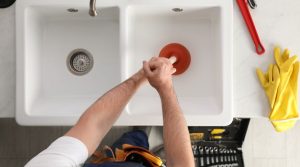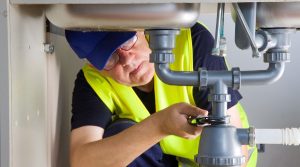No matter where you live when winter is coming you should definitely make sure your heating system is ready.
In most of Canada and a large part of the U.S., furnaces are still the main way people heat their homes.
Most of us don’t turn on our furnaces until at least October. If you’re lucky enough to live somewhere warm, that means they’ve been off for almost six months.
Before the cold weather comes, it’s important to go over some important maintenance tips for your furnace.
By doing these things, you can make sure that your furnace is not only working well but that it is actually working.
Here are the top 9 regular furnace maintenance tasks that everyone should do at least once a year, preferably before the heating season.
1. Clean your air ducts, vents, and filters
When it comes to moving heat, airflow is very important.
At least twice a year, you should clean your vents and replace your air filter. This is even more important in the winter when you use your HVAC system more often.
Now, if you want clean air, you have a huge number of air filters and systems for cleaning the air to choose from.
But that’s a whole other article, and you can find it here if you want to learn more about indoor air quality and your air filter.
Cleaning your vents and ducts is a complicated job.
To remove the vents, you’ll need your vacuum cleaner and hose (preferably a shop vac), a brush, microfiber cloths, and a screwdriver.
Cover your registers with paper towels or cleaning cloths to get started.
The dust comes out of your registers and would be in your home anyway.
Then, turn off the heat but not the power because you will use the fan to blow dust out of the furnace and vents and into your supply register.
Stop the fan and use your vacuum (or a brush) to clean out the supply registers.
If you don’t have a long hose attachment, you can reach into the pipe system with a long broom.
Then you can take out the air vents and clean the dust out of them as well.
From here, you can start to get to your main ducts.
Turn off the fan and the power to your system as a whole. To do this, you’ll need a shop vac, which is a heavy-duty vacuum cleaner. Your home vacuum won’t be strong enough.
This might be the hardest and messiest part of the process, so you might find it helpful to hire a pro. Check the exhaust pipe while you’re there too.
Once everything is in order, you can put in a clean air filter. You can now clean the other parts of your heating system as well.
2. Is it just me or is it cold in here?
Not all homes are the same, and older ones can have a lot of places where the wind can get in. Look around your house for drafty spots and do what you can to fix them…
Every bit of heat you let out is the same as throwing money away. Now might be a good time to fix broken windows or old doors.
3. Keep your heat exchanger clean.
The heat exchanger is an important part of your furnace. It heats the air that is used to heat your home.
Also, it needs to be cleaned at least once a year to get rid of dust and dirt and make sure it works right.
To clean your heat exchanger, turn off your system and, if necessary, turn off the gas as well.
Then, use a brush to clean the exchanger block of any dirt or debris.
If you need to, you can remove any hardened buildup with a damp cloth. Lastly, use a narrow vacuum attachment to clean all of the block assembly’s chambers.
If your system is older, you may want to have it cleaned by a professional. A professional in heating, ventilation and air conditioning will be able to reach all the right parts and check for a cracked heat exchanger.
Damage to the heat exchanger of your furnace can lead to dangerous carbon monoxide leaks.
4. Check your fan and blower motor.
Your blower motor moves air through the vents. Dust can stop it from working right.
When you clean the heat exchanger, you should also clean the blower motor (while the system is completely off).
Take off the blower door to clean the blower.
Safety first, though, so before you do any DIY furnace maintenance, make sure your furnace is turned off by cutting off its fuel supply and power. Close the main gas valve to stop the flow of gas.
You may also need to take out the switch for the fan. Then, use a screwdriver to take the fan out of the cabinet, but be careful not to hurt your fingers or the wires.
You don’t want to mess up the wiring on the edges of the cabinet.
Use the vacuum hose to clean the cabinet, and then clean the blower wheel and motor with a toothbrush or a paintbrush.
You may need to lubricate the blower motor after you clean it. Check your furnace’s owner’s manual to see if this is a step you need to take.
Then, clean the blower bearing caps before taking the bearings out to oil them.
5. Give your thermostat a second look
Imagine calling a heating contractor and paying them $150 to turn your thermostat to heating…
It happens more often than you think, so make sure your t-stat is set right by checking it.
Does your thermostat work at all? The time to find out is now.
After you clean your furnace and put all the parts back in, turn it back on (and restore the gas if necessary). Go to the thermostat and raise the temperature.
A thermostat that works will turn on the heat in about one minute. If you don’t hear the furnace turn on, it could be because the thermostat is broken.
Remove the cover and check your connections to start. All of the wires should be connected.
Hint: check YouTube or Google if you don’t know how to do this. (If you’re not sure how to do this, you can also ask a professional or an electrician to do it for you.)
If the wires look good, make sure you turned on the power source after you were done cleaning.
If it still doesn’t work, you need a professional who works with HVAC systems.
It could be your blower, heat pump, furnace fan, or any of a number of other parts. The thermostat could also be broken.
A professional can test each part and find the culprit.
6. Batteries!
Even though carbon monoxide and smoke detectors’ constant beeping can be annoying, it’s because their batteries are running low and they want you to change them.
So, get off your wallet and protect yourself, your home, and your family by replacing the batteries.
7. Why does my furnace have an odor?
When you first turn on your heater, you may smell a little bit of burning…
It’s probably just the dust burning off on your heat exchanger, but if the smell persists, make sure to take the necessary safety precautions.
You shouldn’t keep paints or chemicals in your furnace room. Even if you can’t smell them, the fumes they give off can hurt your furnace’s heat exchanger.
This can not only lead to expensive repairs but also carbon monoxide poisoning. Keep the room with your furnace clean and clear of things.
Some smells that come from your furnace can be the same ones that come from your air conditioner.
Check out this article to learn more about the most common smells that can come from your HVAC systems.
That might give you a clue about what might be wrong if it smells funny.
8. Inspections before the season
Even the most skilled do-it-yourselfers can benefit from a tune-up and deep cleaning once a year. Why?
Because almost all HVAC manufacturers require one as part of their warranty.
If your furnace breaks down in the winter and you haven’t had your annual check-up, it could be very bad for you.
If you really want to make sure that your furnace will run safely and reliably all winter, you should call a local HVAC service company to do an inspection and maintenance before the season starts.
So be ready and set up a check before it gets too cold.
Hint: if you hire them under an annual furnace maintenance agreement, you’ll get a better deal on the pre-season inspections, and most companies offer premium service at a discounted rate if there happens to be an unscheduled breakdown.
Quick Tip: Keep your HVAC Technician Informed
Keep track of any problems you have with your furnace, heating system, or air conditioner.
Keep all of the bills from when your HVAC technician has been to your home, and keep them all near your furnace…
It could save you hundreds of dollars on future repairs by letting the service technician know about problems that have happened in the past.
9. Do I look older than my furnace?
If your heating system looks like it could be sold on Antiques Roadshow for a lot of money, it might be time to get quotes on a new one.
Make sure to get at least three quotes; they will all be similar, but it will help you feel comfortable that you’re getting a fair deal.
Final Furnace Maintenance Tips
Are you ready for the coming cold months? Before the first cold snap, every homeowner should do certain things.
At a minimum, you should test your thermostat, switch the furnace on at least once, and replace your filter for the season. If your furnace won’t turn on, it could be a sign of a bigger problem.
However, these maintenance tasks are the bare minimum.
Furnace maintenance, like cleaning your furnace’s blower, ducts, and burners, keeps furnace disasters from putting your safety and bank account at risk when winter comes for good.
Plus, it protects your warranty if your HVAC system is relatively new.
Use these tips right away. Soon, the weather will change, and that’s when all the people who put things off call the local HVAC service company at the same time.
Are you ready to set up a furnace tune-up for the winter?
Call CBJ Passaic Plumbers if you need a professional in heating, cooling, and ventilation to help make your home more comfortable.
Check out our page on Furnace Services for more information or a free estimate in your service area.
Get the right professional advice the first time and make the most of your money.
If you liked this article, let us know by sharing it. Read our article about when to call a service technician for more information.
All the best and have a warm and comfortable winter!





